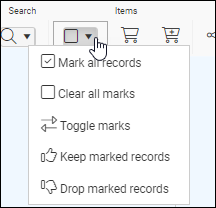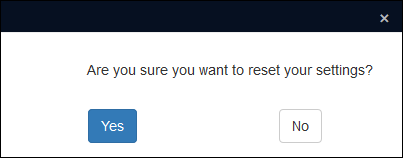Gallery View
- User access permissions
User access permissions are assigned to almost every aspect of Collections from access to individual fields and records to functions such as record entry, deletion of records, location management and reporting. Unless authorized, users will not have access to many of the functions described on this page.
Roles and access rights are managed in Axiell Designer
 A tool for designing, creating, customizing and managing Axiell Collections applications and databases, broadly speaking, the Axiell Collections Model Application. As well as managing databases, including user access and permissions, Designer is used for such tasks as translating field labels, tooltips, values in drop lists, etc.. An overview of Users and roles and User authentication and access rights is available here.
A tool for designing, creating, customizing and managing Axiell Collections applications and databases, broadly speaking, the Axiell Collections Model Application. As well as managing databases, including user access and permissions, Designer is used for such tasks as translating field labels, tooltips, values in drop lists, etc.. An overview of Users and roles and User authentication and access rights is available here. - Record details included with image thumbnail(s)
By default, the record number displays beneath an image in Gallery View:
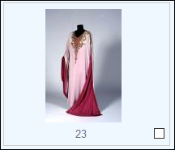
However, it is possible to include other details, such as artist name, object type and/or title for instance:
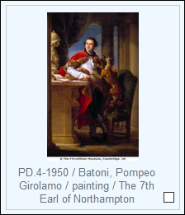
Details here.
Similar to Result set View, Gallery View lists records returned by a search; retrieved from a saved search; newly created; following the import of records, and so on. In fact, the same set of records display in both Views.
The same set of records will be listed in Result set View and Gallery View and the current record![]() The record currently displayed in Record details View or highlighted (with a solid background) in Result set View or Gallery View for instance. is the same in both Views: selecting a record in one View will select it in the other and make it the current record.
The record currently displayed in Record details View or highlighted (with a solid background) in Result set View or Gallery View for instance. is the same in both Views: selecting a record in one View will select it in the other and make it the current record.
Marking![]() Marking a record means selecting it by adding a tick to the record's checkbox in Result set View or Gallery View, and in Record Details View from Collections 1.15 onwards. One or more records can be marked and then actioned in some way (e.g. printed). a record in one View will mark it in the other.
Marking a record means selecting it by adding a tick to the record's checkbox in Result set View or Gallery View, and in Record Details View from Collections 1.15 onwards. One or more records can be marked and then actioned in some way (e.g. printed). a record in one View will mark it in the other.
Gallery View is displayed / hidden by selecting its button in the top Toolbar. This View displays thumbnail images from the listed records. A frame displays for every record listed with a thumbnail for an image linked to the record, along with some record data (the record number by default):
Each record listed in Gallery View is presented in a frame that includes a thumbnail of an image linked to the record; if more than one image is linked to the record, the preferred image is displayed (details here), otherwise the first linked image is displayed by default (it is possible to display more than one thumbnail1).
By default, the only record details included with the thumbnail image is the record number; however it is possible for your Application Administrator to configure Gallery View to display other details in the frame, such as artist name, object type and/or title:

The size of thumbnails can be changed in the Settings box (five relative sizes from Extra small to Extra Large are available).
Tip: A larger version of a thumbnail can be viewed by hovering the mouse pointer over the image for about two seconds.
Tip: Each frame also includes a checkbox that allows a record to be marked![]() Marking a record means selecting it by adding a tick to the record's checkbox in Result set View or Gallery View, and in Record Details View from Collections 1.15 onwards. One or more records can be marked and then actioned in some way (e.g. printed).. Records can be marked individually (click a checkbox) or all records currently listed can be marked at once with the Mark all records
Marking a record means selecting it by adding a tick to the record's checkbox in Result set View or Gallery View, and in Record Details View from Collections 1.15 onwards. One or more records can be marked and then actioned in some way (e.g. printed).. Records can be marked individually (click a checkbox) or all records currently listed can be marked at once with the Mark all records  button in the Gallery View toolbar. Marked records can then be stored as a record group or printed.
button in the Gallery View toolbar. Marked records can then be stored as a record group or printed.
Tip: To remove the tick from a single checkbox, simply click it. To remove all marks, click Clear all marks  .
.
A useful combination of Views is Gallery View alongside Record details View: the current record![]() The record currently displayed in Record details View or highlighted (with a solid background) in Result set View or Gallery View for instance. is always the same in each View, so as you move from one record to another in Gallery View (by clicking a record or using the Record navigation buttons in the top Toolbar), all available details for the current record will display in Record details View.
The record currently displayed in Record details View or highlighted (with a solid background) in Result set View or Gallery View for instance. is always the same in each View, so as you move from one record to another in Gallery View (by clicking a record or using the Record navigation buttons in the top Toolbar), all available details for the current record will display in Record details View.
Note: Gallery View cannot be detached from the main Axiell Collections Window.
There are several ways to navigate records listed in Gallery View:
- Use the navigation buttons in the top Toolbar to select the first, previous, next or last record:

- Alternatively:
- With the cursor over Gallery View, scroll through the list with your mouse scroll wheel (or equivalent slider); or
- Click the vertical scroll bar on the right of the View window and drag up / down; or
- Select a record and use your keyboard Up / Down keys.
Tip: Gallery View and Result set View scroll independently of each other.
Unlike Result set View, which can display records as either a scrollable list or in pages, Gallery View only displays paginated results:

Each page holds a maximum of 40 records. Select a page number to move to the page or use the navigation buttons (these perform the same function, and share the same keyboard shortcuts, as the buttons in the top Toolbar):
| Record | Button | Keyboard shortcut | Description |
|---|---|---|---|
|
First |
|
CTRL+F6 |
Move to the first record in the current list of records (the first page of results). |
|
Previous |
|
F6 |
Move to the previous record. |
|
Next |
|
F5 |
Move to the next record. |
|
Last |
|
CTRL+F5 |
Move to the last record in the current list of records (the last page of results). |
Note: When the Mark all records  button in the Gallery View toolbar is selected, every record on every page is marked. not just this on the current page.
button in the Gallery View toolbar is selected, every record on every page is marked. not just this on the current page.
The Gallery View toolbar
The Gallery View toolbar sits below the top Toolbar and contains functions for processing and interacting with records listed in this View:

Notes
- Some of these functions may not be available in your system, or you may not be authorized to use them (speak to your Application Administrator if you require access to these functions).
- Some options will be inactive until one or more records are marked (checked).
| Option | Icon | Details | |||||||||||||||
|---|---|---|---|---|---|---|---|---|---|---|---|---|---|---|---|---|---|
|
|
Perform a basic search in the current data source The chief virtue of this search option is its simplicity: you select a field to search from the drop list and enter a search term. You can apply wildcard characters ( That's basically it. Although there is, of course, more going on. A strength of this search option is that fields in the drop list can be associated with related fields so that more than one field is searched your search term. If available in your system, the <Simple search>2 option is configured to search multiple fields at once. If you hover the cursor over a field or <Simple search>, a pop up displays the field tag
More advanced searches:
|
||||||||||||||||
|
|
Drop list of options for marking records:
|
||||||||||||||||
|
|
Save records currently listed in Result set View (and Gallery View) as a group. It is possible to save all records listed or just marked records. If records currently listed were returned by a search, the search term(s) used to generate the record set can be saved, and the search subsequently re-run. See Group records: Write set & Manage saved searches for details. |
||||||||||||||||
|
|
Restore a group of records saved with Write set or re-run the search that generated the group of records saved with Write set. Depending on your system, it may be possible to schedule a saved search (a Write-set) to run automatically and print or email the result of the search. See Group records: Write set & Manage saved searches for details. |
||||||||||||||||
|
|
Specify the size of thumbnail images in Gallery View. Depending on your version of Collections, up to seven relative sizes are available3:
Any change you make is associated with your user account and recalled by Collections whenever you log in. By default, only one thumbnail is shown per record in both Result set View and Gallery View. Both Views include an option to set the maximum number of thumbnails to display per record4. As you can see, the number is set independently for each View: If a preferred image has been specified, it will display first. A default thumbnail size is specified for your system and you can always restore this default setting by selecting Reset. A message will ask you to confirm the reset:
Tip: An option in the Main menu enables you to restore ALL settings you have changed across Collections back to their default. The Reset option in the Gallery View settings box only affects this View's settings. |






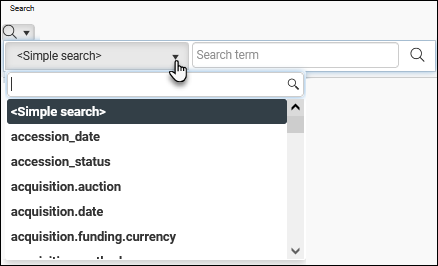
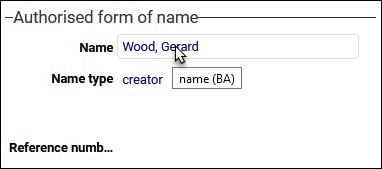
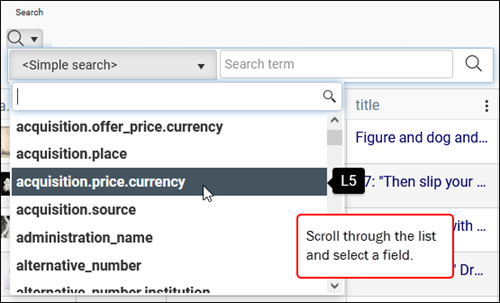
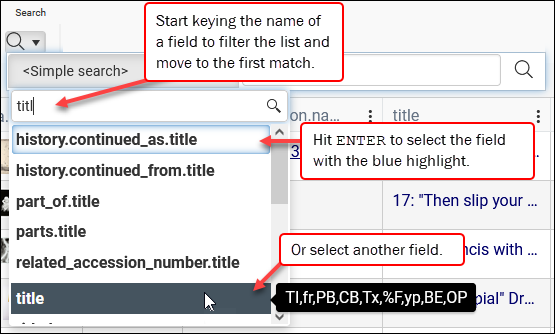




 button in the toolbar again.
button in the toolbar again.